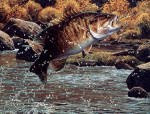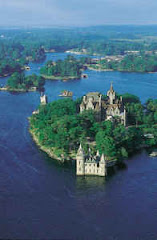For the lake sturgeon to be taken off the state’s list of threatened species, the DEC’s proposed Lake Sturgeon Recovery Plan requires at least 750 sexually mature sturgeon to be documented in six of the DEC’s seven management units statewide as well as evidence of at least three years of wild reproduction of the fish over a five-year period.
Lake Erie – including Cattaraugus Creek, Buffalo Harbor and the upper Niagara River – is considered to be one of those six areas.
Lake Ontario, from the lower Niagara River and the lake to about Rochester, is another.
In the St. Lawrence River, the lake sturgeon has come all the way back. More than 1,000 sturgeon have been located at Massena.
It was that discovery – and vast new research into the lake sturgeon’s spawning tendencies, range and other data – that prompted the DEC to revisit its recovery plan for the fish that was last updated a dozen years ago.
Lake Erie – including Cattaraugus Creek, Buffalo Harbor and the upper Niagara River – is considered to be one of those six areas.
Lake Ontario, from the lower Niagara River and the lake to about Rochester, is another.
In the St. Lawrence River, the lake sturgeon has come all the way back. More than 1,000 sturgeon have been located at Massena.
It was that discovery – and vast new research into the lake sturgeon’s spawning tendencies, range and other data – that prompted the DEC to revisit its recovery plan for the fish that was last updated a dozen years ago.




